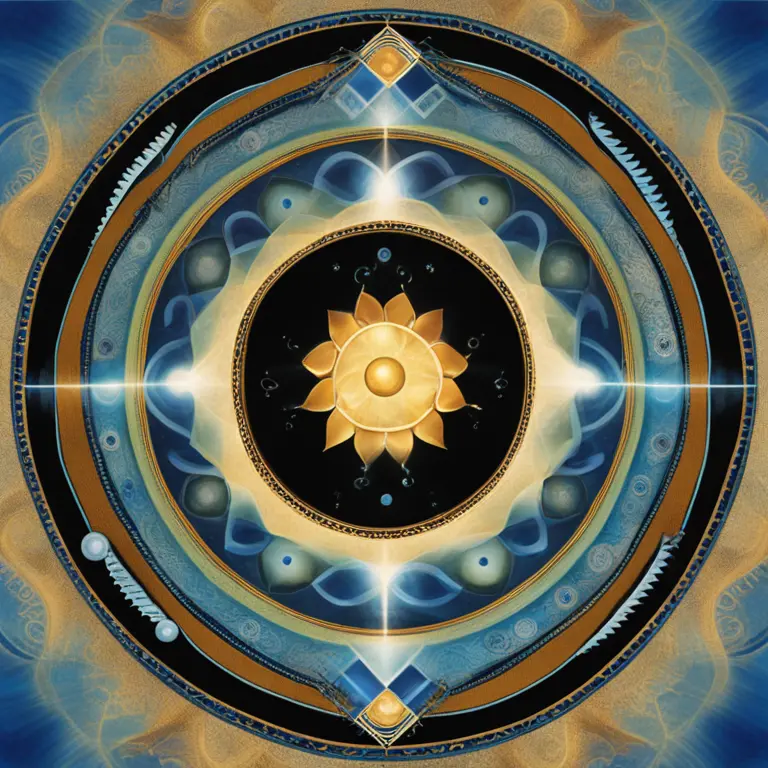
Kundalini Meditation Techniques to Awaken Energy
Discover the transformative practice of Kundalini meditation, its techniques, and guiding principles to awaken your inner energy.
article by Hina Kurosawa
Introduction to Kundalini Meditation
Meditation has long been practiced for spiritual growth and emotional well-being, and Kundalini meditation is a profound aspect of this ancient tradition. Originating from tantric texts and the yogic system, Kundalini refers to a form of primal energy believed to reside at the base of the spine. This meditation aims to awaken this dormant energy, allowing it to rise through the chakras, leading to higher consciousness and enlightenment. In this article, we delve into the core techniques of Kundalini meditation, providing a roadmap for individuals looking to embark on this transformative journey.

The Basics of Kundalini Energy
Before embarking on exercises designed to awaken Kundalini, it's essential to understand its foundation. Kundalini energy is often symbolized as a coiled serpent at the base of the spine. Through consistent practice, this coiling energy unravels and ascends through various energy centers or chakras in the body. Each chakra corresponds to different aspects of our mental and physical health. Therefore, releasing Kundalini energy not only aims for spiritual awakening but can also bring balance and healing to various aspects of life.

Preparing for Kundalini Meditation
Preparation is key in Kundalini meditation practice. It begins with choosing a quiet, comfortable space where disturbances are unlikely. Practitioners usually sit in a cross-legged position, with a straight spine to facilitate the flow of energy. Breath control, or pranayama, is also significant, as breath is the vehicle for moving energy. Proper guidance from an experienced teacher can provide valuable insight and ensure the techniques are executed safely and effectively.

Kundalini Awakening Techniques
A central technique in Kundalini meditation involves the Kundalini breathing method, or the 'Breath of Fire'. It’s performed by rapid, rhythmic inhalations and exhalations through the nose, which is said to generate heat and awaken the Kundalini energy. Visualization is also crucial; meditators may be guided to imagine the energy flowing upwards from the base of the spine. Additionally, the use of mantras and mudras (specific hand positions) supports focus and helps in channeling energy appropriately.

The Role of Mantras
Mantras are sound vibrations that can alter consciousness when chanted repetitively. In Kundalini meditation, they are pivotal tools for keeping the mind focused and disciplined. Different mantras correspond to different chakras and intentions. Chanting is sometimes accompanied by music, which can elevate the meditative experience and aid in energy ascension. Adherence to a particular mantra may vary depending on the goal of the meditation session and the individual's level of practice.
The Integration of Yoga Postures
Kundalini meditation often incorporates certain yoga postures, or asanas, to aid the awakening process. These asanas are designed to strengthen the nervous system, enhance glandular functions, and stimulate specific chakras. Positions such as 'Cobra Pose' or 'Lotus Pose' are frequently used due to their efficacy in promoting the upwards movement of Kundalini energy. A kriya, which is a set of postures, breath, and sound, is typically practiced to amplify the practitioner's focus and energy flow.
Consistency and Patience
Kundalini meditation is a profound practice that requires patience, consistency, and respect for the process. The gradual build-up of practice sessions ensures a safe and sustainable rise of energy. Rushing or forcing the experience can lead to discomfort and is not recommended. Regular practice, guided by an adept teacher, can help individuals avoid potential pitfalls and foster a tranquil pace for Kundalini awakening. With time, practitioners may notice a significant impact on their spiritual and physical states of being.
Published: 2/12/2024
Modified: 2/12/2024
More predictions
Come back here soon to learn more about yourself and your future


The Harmonic Resonance of Meditation Music
Delve into the serene world of meditation music and discover how it amplifies your spiritual and astrological practices, guiding you toward inner peace and cosmic synchronicity.


The Benefits of Meditation Music
Discover the benefits of meditation music for enhancing mindfulness practices and spiritual alignment, while diving into the celestial influence on your inner peace journey.


The Heart of Meditation: A Journey Inward
Discover the heart of meditation, its benefits, and how to integrate this ancient practice into modern life for peace and self-discovery.